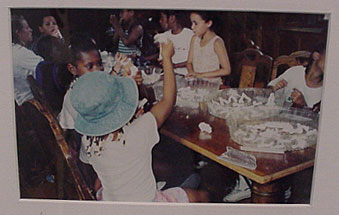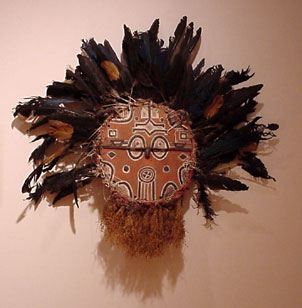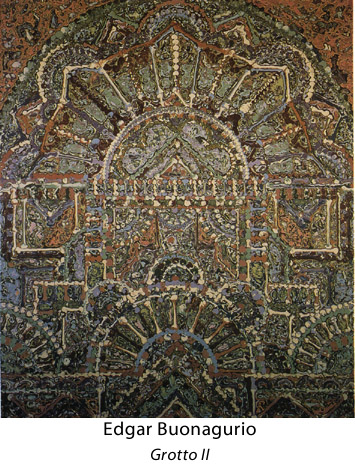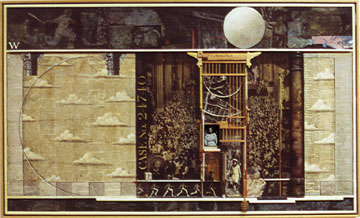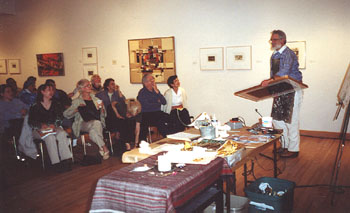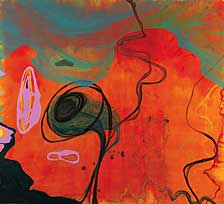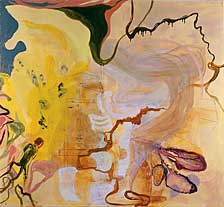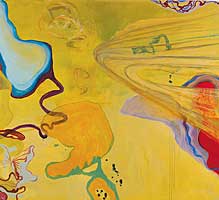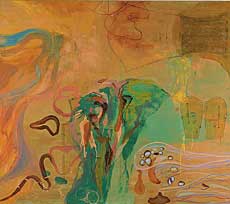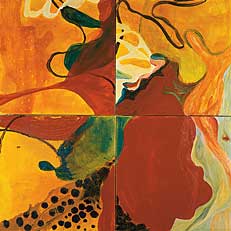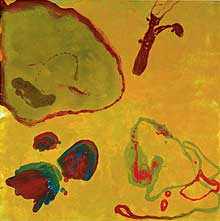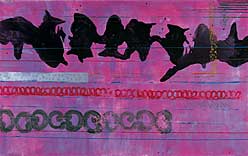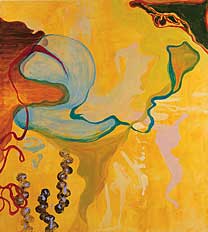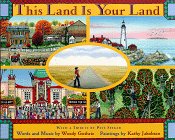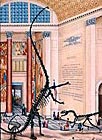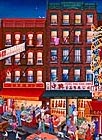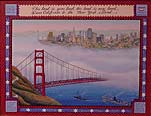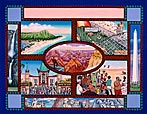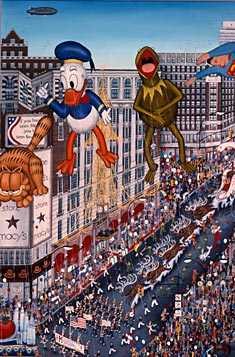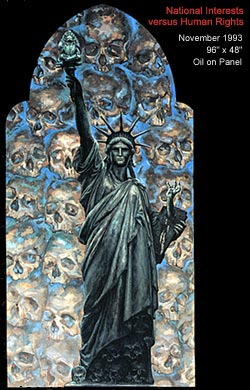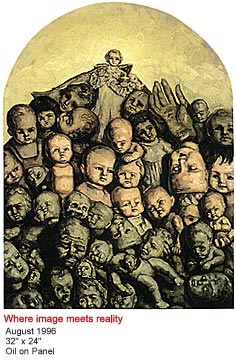THE PROMISE OF EQUALITY AND JUSTICE FOR ALL
by Tony Ball, Instructor of History
On August 25, 1864, over a year and half after the issuance of
the Emancipation Proclamation, a black woman named Annie Davis
wrote President Abraham Lincoln from Maryland. Her words remain
poignant to this day:
Mr president It is my Desire to be free. to go to see my
people on the eastern shore. my mistress wont let me you will
please let me know if we are free. and what i can do. I write
to you for advice. please send me word this week. or as soon
as possible and oblidge.
There is no record of a response from the Lincoln Administration.
Of course Annie Davis was not free; the Emancipation Proclamation
explicitly excluded those slaves that were in Union-controlled
territories, or in slave states like Maryland that had not joined
the Confederacy. As Lincoln had famously noted during the Gettysburg
Address, the American War for Independence had commenced some
"four score and seven" years earlier. But the American
Revolution, the long and sometimes violent struggle to make the
vaulted principles of the Declaration of Independence a reality
for African-Americans and other dispossessed peoples, was only
just beginning.
In 1865, the 13th Amendment to the Constitution prohibited slavery
in the United States. The 14th Amendment defined American citizenship
based on birth (not race), and guaranteed to all persons equal
protection and due process of law. The 15th Amendment forbade
states from denying citizens the right to vote based on their
race, color, or previous condition of servitude. With these Civil
War Amendments and Congress' Reconstruction program, there
was, for the first time in our history, a chance to bring about
a more racially just society. Less than a decade after the United
States Supreme Court had declared that no African-American could
ever be considered a citizen of the United States, the first blacks
were elected to the Congress, as well as to the legislatures of
the several southern states.
Like emancipation for Annie Davis, true progress towards racial
justice was elusive. For one thing, most white Americans in the
19th century simply did not believe in equality and were committed
to maintaining political, economic and social control over African-Americans.
In 1877, Congress officially ended Reconstruction, ordering the
withdrawal of the remaining federal troops from the south. Southern
whites were free to turn back the clock on equality and reverse
those gains that had been made by African-Americans in the years
immediately after the Civil War. Black voters were disenfranchised
and the legal, economic and social system refined to keep blacks
in virtual, if not actual, bondage. Jim Crow laws, mandating the
physical separation of the races, were vigorously enforced, and
those African-Americans who sought to leave the South for America's
Midwest and West often had to do so under cover of darkness.
Thousands of African-Americans like Annie Davis were only half-free,
completely subjugated and segregated in a society in which privilege
and skin color were inextricable. It would take two world wars
and an economic depression to bring the nation forward, and to
hold Americans to the ideals of liberty and equality that form
the foundation of our republic.
In 1910, the noted African-American sociol- ogist W. E. B. DuBois,
the anti-lynching crusader Ida B. Wells, educational pioneer John
Dewey, and other progressives helped form the National Association
for the Advancement of Colored People (NAACP). Although just two
decades earlier the United States Supreme Court had declared in
the case of Plessy v. Ferguson that the forced segregation of
blacks was constitutional as long as they were given "equal"
facilities, the NAACP was committed to the strategy of using litigation
to widen opportunities and address racial injustice. Early victories
before the Supreme Court in the late 1910s and 1920s suggested
that the NAACP had embarked on the right course.
Meanwhile, African-American soldiers had served with distinction
during America's involvement in World War I (1917-1918),
and returned to the United States with greater expectations for
equal treatment and economic opportunity. However, the broader
society was still ill-prepared for meaningful advances in civil
rights. Indeed, after the production of the notoriously racist
film The Birth of a Nation in 1915, organizations like the Ku
Klux Klan experienced a resurgence, and African-Americans were
increasingly the victims of lynching and other forms of racial
violence. Indeed, even as black intellectuals and artists thrived
during the years of the Harlem Renaissance and as African-Americans
migrated to Northern industrial cities from the South in greater
numbers, racial violence and injustice became even more entrenched.
The American stock market crash in October, 1929, and the ensuing
Great Depression devastated African-Americans, who were disproportionately
employed in the hard-hit agricultural sector of the economy. However,
the Depression also helped forge a political realignment in the
United States in which African-Americans, long faithful to Lincoln's
Republican Party, were now part of Franklin Delano Roosevelt's
Democratic New Deal Coalition. Together with intellectuals, Catholics,
Jews, poor farmers and organized labor, African-Americans were
part of a new progressivism in the United States which would redefine
American society and government's role within it.
Despite the importance of African-Americans to Roosevelt's
political coalition, little actual progress was made in the area
of civil rights during the 1930s. Roosevelt steadfastly declined
to endorse federal anti-lynching laws, and much of the legislation
aimed at alleviating the effects of the Depression excluded African-Americans.
When the United States' entry into World War II seemed an
inevitability, the African-American labor leader A. Philip Randolph
threatened a demonstration in the nation's capital to protest
unjust treatment at home. Roosevelt responded by issuing an executive
order which forbade government contractors from discriminating
in hiring or wages based on race, and Randolph called off the
march on Washington. As they had in World War I, African-American
soldiers, sailors and airmen played a crucial role in the second
World War, although again in segre-gated units. Significantly,
blacks and women were vital to the nation's wartime industries
which produced the munitions, planes, ships, tanks and other equipment
necessary in the prosecution of the war.
World War II forced Americans to look more carefully at their
own record on race and civil rights and further raised the expectations
of African-Americans. In 1946, Franklin Roosevelt's successor
Harry Truman created the Federal Committee on Civil Rights; two
years later Truman ordered the desegregation of the U.S. armed
services. Meanwhile the NAACP continued its litigation strategy.
When a black student at the University of Oklahoma was not allowed
to sit in the same classroom with white students, the NAACP filed
suit. The Supreme Court invalidated the University of Oklahoma's
segregation policy, ruling that forcing the student, G. W. McLaurin,
to sit in an adjoining hallway could not be considered equal treatment
as required by the 14th Amendment or the Supreme Court's
1896 Plessy v. Ferguson decision. At the same time, the Court
indicated its willingness to reconsider Plessy's "separate
but equal" doctrine altogether, and NAACP attorneys began
to envision an end to legally enforced Jim Crow segregation.
That opportunity came with the 1954 case of Brown v. Board of
Education of Topeka, Kansas in which Chief Justice Earl Warren
declared on behalf of a unanimous court that the segregation of
children in public schools solely on the basis of race violated
the Constitution's 14th Amendment, because "separate
educational facilities are inherently unequal." This ruling
was a major victory for the NAACP and for Thurgood Marshall, who
argued the case before the Court and would subsequently be named
the nation's first African-American Supreme Court justice.
However, getting southern states to adhere to the Court's
mandate would be no easy task and after the Brown decision the
civil rights strategy clearly shifted from litigation to political
activism and protest.
White resistance to desegregation was fierce. In the summer of
1955, a 14-year-old boy named Emmett Till was lynched in the small
town of Money, Mississippi, presumably for having said "bye, baby"
to a white woman in a candy store. Throughout 1955, local sheriffs
in the South stepped up the enforcement of Jim Crow laws and customs,
notwithstanding the clear direction of the Supreme Court towards
invalidating such segregation. 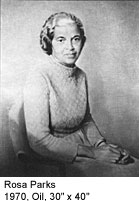
In Montgomery, Alabama, a 15-year-old girl black named Claudette
Colvin was arrested for refusing to give her bus seat over to
a white passenger. Montgomery's civil rights community considered
rallying to Colvin's cause but ultimately decided that Colvin,
who was unmarried and pregnant at the time, might not be the best
person to symbolize the pernicious effects of Jim Crow segregation.
Some months later, in December of 1955, a 43-year-old seamstress
named Rosa Parks was arrested by Montgomery's police also
for having refused to vacate her bus seat to a white passenger.
This time, the civil rights community in Montgomery mobilized,
forming a Montgomery Improvement Association (MIA) and calling
for a boycott of the city's public transportation system.
The MIA selected as its president a young minister named Martin
Luther King, Jr. and the modern civil rights era had begun.
The Montgomery Bus Boycott lasted over a year. Although the practice
of boycott in America went back to the days preceding the War
for Independence, King and the entire MIA leadership were indicted
on charges of "conspiring" to disrupt the city's
bus system. Bayard Rustin, one of King's closest advisors,
urged the Montgomery boycott organizers to submit freely to arrest
following the non- violent principles of Mohandas Gandhi. The
adoption of passive resistance, and King's subsequent articulation
of principles of non-violence based on Christian theology, elevated
King as a moral leader and gave him national stature.
The boycott finally came to an end on December 21, 1956, after
the U.S. Supreme Court declared Montgomery's bus segregation
unconstitutional. But King was committed to taking the civil rights
agenda forward. He helped form a new organization, the Southern
Christian Leadership Council (SCLC), whose focus extended beyond
desegregation of transportation facilities to education, voting
rights, employment and economic opportunities.
President Dwight D. Eisenhower had succeeded Harry Truman in
1953. Eisenhower gave only lukewarm support to the Supreme Court's
decision in Brown v. Board of Education. However, he did back
the Civil Rights Act of 1957, the first federal anti-discrimination
legislation since the end of Reconstruction. In 1957 Eisenhower
also sent 1,100 federal troops to Little Rock, Arkansas, to enforce
a federal court order mandating the admission of black students
to the city's Central High School.
In the early the 1960s, young people began to take a more active
role in the growing civil rights movement. Black college students
developed the strategy of the sit-in, aimed initially at forcing
the desegregation of local restaurants in places like Greensboro,
North Carolina. Student activism represented a new phase in the
civil rights movement as well as the beginning of the political,
cultural and social turmoil of the 1960s. In April, 1960 young
people met and formed the Student Nonviolent Coordinating Committee
(SNCC). SNCC initially embraced nonviolent strategies but during
the 1960s its use of direct confrontation and increasing militancy
would stand it in sharper contrast with King and the older, more
conservative civil rights leaders.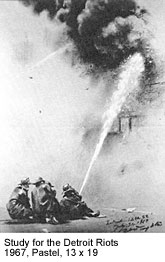
In 1961, college students began partici-pating in "Freedom
Rides" in which interracial groups challenged segregation
aboard interstate buses and trains. When John Lewis, one of the
black riders and a future member of Congress, entered a Greyhound
station in Rock Hill, South Carolina, he was brutally attacked
by a white mob. The local police stood by and watched. That incident
and subsequent violence against freedom riders highlighted the
need for strong federal leadership. King and other civil rights
leaders appealed to President John F. Kennedy for support. But
Kennedy was hamstrung by his own party; southern Democrats constituted
a powerful bloc in the Senate and were committed to defeating
any additional civil rights legislation.
That reality led the NAACP, SNCC, the SCLC and the Congress on
Racial Equality (CORE) to focus their efforts on voter registration
and education in the South. Despite their differences, all of
the major civil rights groups began to view political empowerment
as a necessary precondition to further progress. But political
enfranchisement struck at the heart of the white power structure,
and led to escalating levels of violence and suppression against
civil rights activists. Alabama's state courts prohibited
protest, and in April, 1963, King was arrested in Birmingham for
engaging in a nonviolent march. From his Birmingham jail cell,
King wrote a famous letter which crystallized his philosophy and
energized the civil rights movement. Freedom, wrote King, "is
never voluntarily given by the oppressor; it must be demanded
by the oppressed." The goal of nonviolent direct action was
"to create such a crisis and foster such a tension that a
community... is forced to confront the issue."
That crisis had certainly arrived in 1963. In May much of the
nation and indeed the world was outraged when Birmingham's
police chief, Eugene "Bull" Connor, set his fire hoses
and police dogs on young children, assembled to peacefully protest
continued segregation and injustice in the city. This, and the
assassination of civil rights leader Medgar Evers in Jackson,
Mississippi, the following month illustrated the point that white
segregationists were willing to use terror and violence to stem
the tide of change.
In response to the violent turn of events, the Kennedy administration
proposed more sweeping civil rights legislation, but again this
effort was stymied by southern Democrats. A coalition of civil
rights organizations sought to support Kennedy's initiatives
by planning a new protest on Washington, 22 years after A. Philip
Randolph's threatened protest in the nation's capital
had been called off. In August, 1963, over a quarter million marchers
gathered before the Lincoln Memorial to hear King's dream
for a racially just society, in which people would be judged not
"by the color of their skin but by the content of their character."
King's impassioned plea did not stop the racial violence.
Just two weeks later four little girls attending Sunday school
in Birmingham were killed when a bomb planted by white racists
exploded at the 16th Street Baptist Church.
After John F. Kennedy's assassination in November, 1963,
the civil rights movement took a new turn. Kennedy's successor,
Lyndon Baines Johnson, was committed to the civil rights agenda.
Moreover, as a former southern senator himself, Johnson had the
standing and political skill to effectively deal with the members
of his own party who had stymied legislation in the past. Johnson
engineered Congressional passage of the Civil Rights Act of 1964,
made all segregation in public facilities illegal, established
an Equal Opportunity Employment Commission to combat job discrimination,
and banned gender discrimination in employment and education.
As Congress was taking up the civil rights legislation, activists
continued their voter registration and education efforts. The
major civil rights organizations targeted Mississippi for a massive
voter registration drive to begin in the summer of 1964. Mississippi's
"Freedom Summer" attracted scores of college students
from throughout the nation who braved racist local law enforcement,
the Ku Klux Klan and the hostilities of white mobs to enfranchise
African-American voters. The murder of three student activists
- James Chaney, Andrew Goodman, and Michael Schwerner -
in June and a wave of church bombings, shootings and beatings,
did not prevent the organizers of the "Freedom Summer"
from empowering hundreds of black voters. However, the violence
perpetrated against the Freedom Summer activists, as well as the
escalation of the conflict in Vietnam, persuaded many young people
in the civil rights struggle that the time had come to abandon
the core principles of nonviolence and passive resistance that
King had popularized.
Moreover, the traditional civil rights focus on desegregation
seemed to ignore many of the pressing social and economic problems
faced by African-Americans outside the south. The once booming
industry that had attracted blacks to the northeast and midwest
were beginning to close, and America's central cities had
fallen into a rapid decline. The black nationalist and Nation
of Islam spokesman Malcolm X came to stand for a more militant
urban movement, which questioned the wisdom of nonviolence as
well as the emphasis on integration. Malcolm X's assassination
in 1965 did little to quiet this more strident activism. In 1966,
Stokely Carmichael became chair of SNCC. He moved to expel SNCC's
white members and to promote more militant confrontation. Even
the word "Nonviolent" in SNCC's acronym was changed
to "National," clearly indicating the new direction
the organization was taking. "Black Power" became Carmichael's
favorite slogan. H. Rap Brown, Carmichael's successor at
SNCC, declared violence "as American as apple pie."
In October, 1966, Huey Newton and Bobby Seale founded the Black
Panther Party for Self-Defense in Oakland, California. The Party's
minister of education, Eldridge Cleaver, became one of the nation's
most eloquent and controversial spokesmen for the new militancy
which advocated the violent overthrow of repressive political
and economic systems.
Part of the problem was that after the passage of the Civil Rights
Act of 1964 and the subsequent 1965 Voting Rights Act, the goals
and objectives of the civil rights movement became much less clear.
King began to speak more clearly about issues of poverty and oppression
that transcended racism, launching plans to begin a Poor People's
Campaign in 1967. He also spoke out against the war in Vietnam.
But the issues of poverty and American policy abroad were far
more complex than dismantling Jim Crow segregation in the south,
and their solutions far more elusive.
To many, King's assassination in 1968 marked the end of
the traditional civil rights movement. SNCC was virtually defunct
by 1969 and most of the Black Panther leadership was either jailed,
exiled or dead by the end of the decade. There can be little doubt
that America still has a long road before (to quote King's
"I Have a Dream" speech) the nation rises "up and
lives out the true meaning of its creed." But the changes
which occurred in American society during the late 1950s and 1960s
were indeed profound, and moved the nation far closer than it
has ever been to fulfilling the constitutional promise of equality
and justice for all.
Tony Ball
Instructor in History
Housatonic Community College
December 27, 2001
|

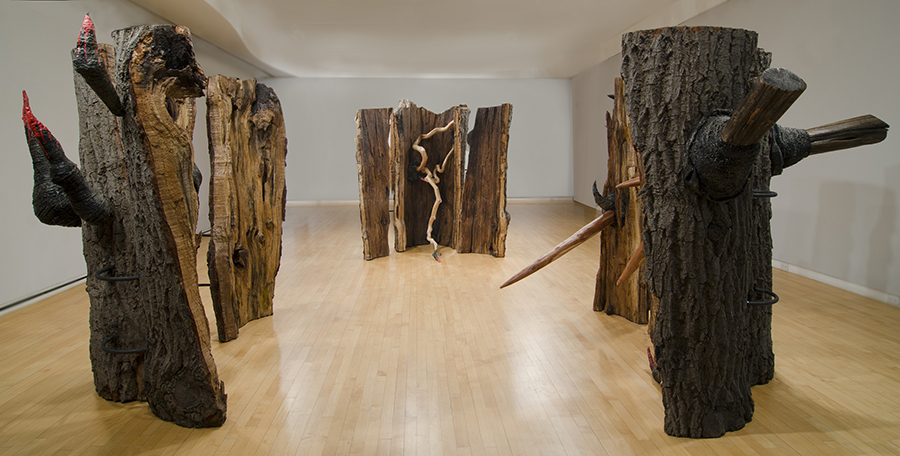
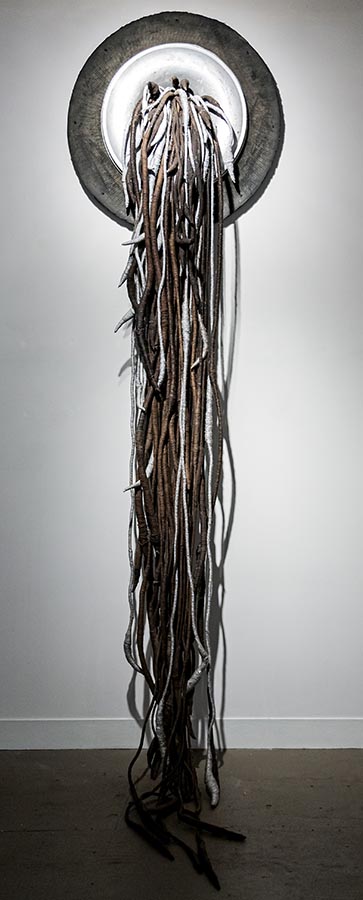
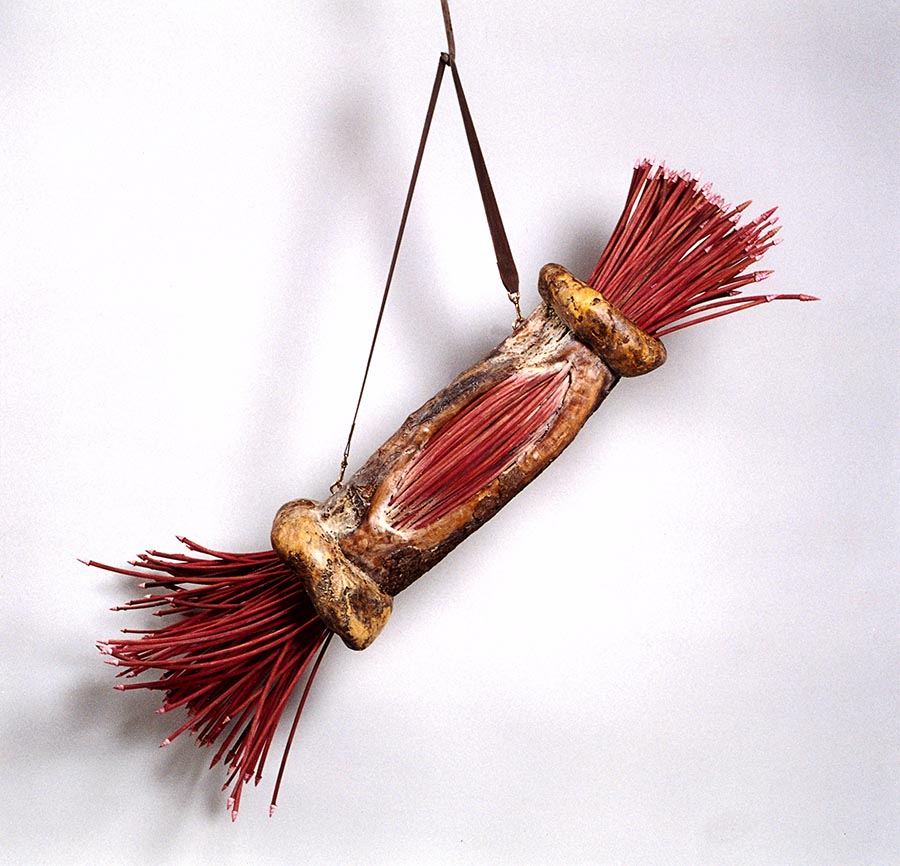

 The book New York September 11 by Magnum Photographers is available for sale for $30.00.
The book New York September 11 by Magnum Photographers is available for sale for $30.00. 

 OUT OF A CLEAR BLUE SKY is an exhibition to commemorate the first anniversary of the tragedy of September 11. This photographic exhibit includes images by Magnum photographers from the book
OUT OF A CLEAR BLUE SKY is an exhibition to commemorate the first anniversary of the tragedy of September 11. This photographic exhibit includes images by Magnum photographers from the book 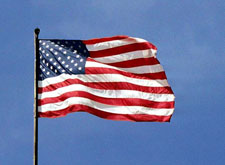
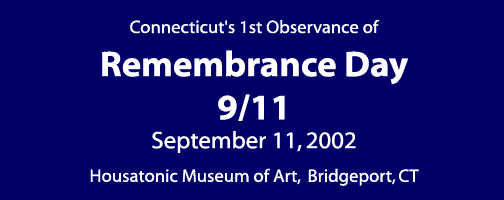

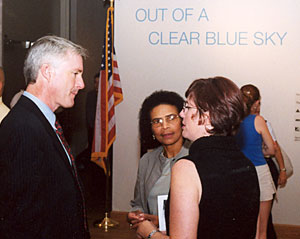
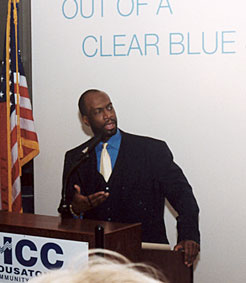
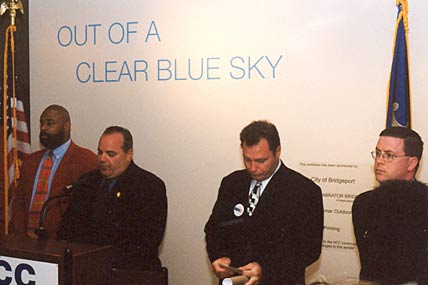
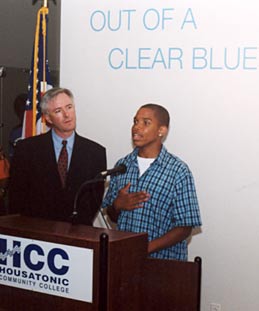
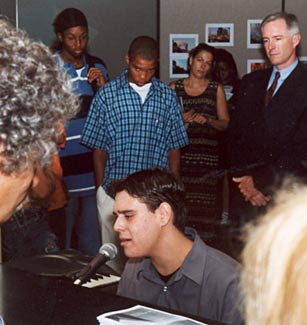

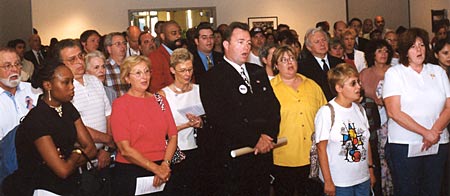
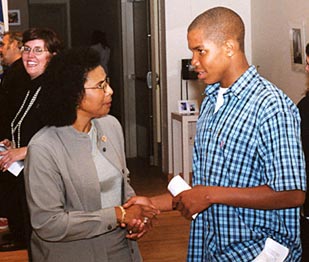
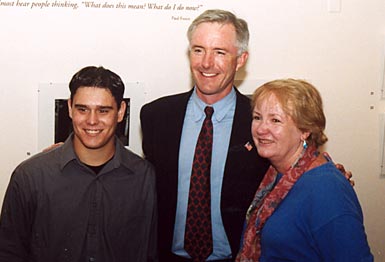


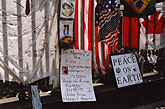



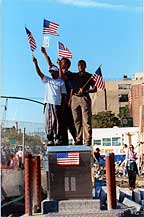

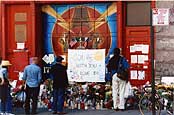








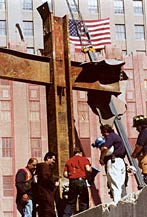

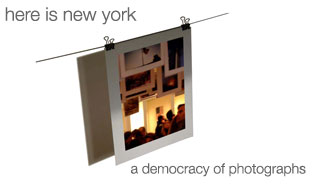 here is new york is not a conventional gallery show. It is something new, a show tailored to the nature of the event, and to the response it has elicited. The exhibition is subtitled "A Democracy of Photographs" because anyone and everyone who has taken pictures relating to the tragedy is invited to bring or ftp their images to the gallery (in SOHO) , where they will be digitally scanned, archivally printed and displayed on the walls alongside the work of top photojournalists and other professional photographers.
here is new york is not a conventional gallery show. It is something new, a show tailored to the nature of the event, and to the response it has elicited. The exhibition is subtitled "A Democracy of Photographs" because anyone and everyone who has taken pictures relating to the tragedy is invited to bring or ftp their images to the gallery (in SOHO) , where they will be digitally scanned, archivally printed and displayed on the walls alongside the work of top photojournalists and other professional photographers. 
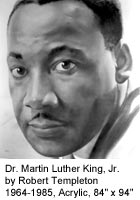










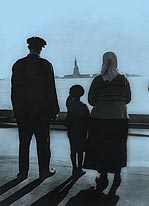
 Grain
by Janet Passehl
Grain
by Janet Passehl

















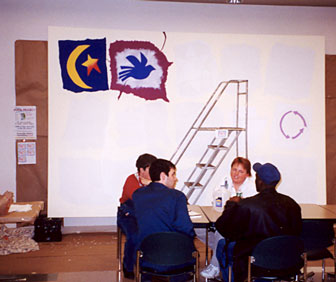

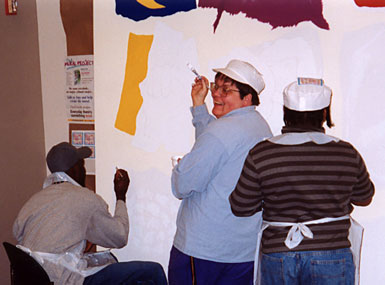




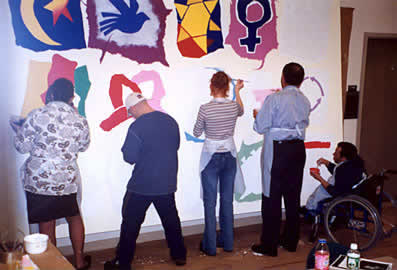






 Artistically, I transform discarded objects to create a visual language that evokes the experiences of impermanence and loss, fragility and vulnerability, pain and most of all, healing and survival. This work has evolved from my experiences with the homeless and other marginalized communities.
Artistically, I transform discarded objects to create a visual language that evokes the experiences of impermanence and loss, fragility and vulnerability, pain and most of all, healing and survival. This work has evolved from my experiences with the homeless and other marginalized communities.
